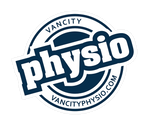Improving posture through physiotherapy involves a combination of exercises, stretches, and lifestyle adjustments aimed at strengthening muscles, increasing flexibility, and retraining the body to maintain proper alignment. Here are some physiotherapy-related tips to improve posture:
-
Postural Correction Exercises: Physiotherapists often prescribe specific exercises to strengthen muscles that support good posture. These may include exercises targeting the core muscles, back muscles, and muscles around the shoulders and neck.
-
Stretching: Tight muscles can contribute to poor posture. Physiotherapy often involves stretching exercises to improve flexibility in key areas such as the chest, shoulders, hip flexors, and hamstrings.
-
Education and Awareness: Physiotherapists educate patients about the importance of good posture and how to maintain it throughout daily activities. This may involve instruction on proper sitting, standing, and lifting techniques.
-
Manual Therapy: Techniques such as massage, mobilization, and manipulation may be used by physiotherapists to address muscle tightness, joint stiffness, and other issues contributing to poor posture.
-
Postural Bracing or Taping: In some cases, postural braces or taping techniques may be used temporarily to support proper alignment and help retrain muscles to maintain good posture.
-
Functional Training: Physiotherapists often incorporate functional exercises into treatment plans, focusing on activities relevant to the individual's daily life or specific work requirements to improve overall posture and movement patterns.
-
Ergonomic Assessment and Advice: Physiotherapists can assess workstations and other environments to identify ergonomic factors contributing to poor posture. They may provide recommendations for adjustments to chairs, desks, computer setups, and other equipment to promote better alignment.
-
Progressive Rehabilitation Programs: Improvement in posture often requires a gradual and progressive approach. Physiotherapists develop customized rehabilitation programs tailored to the individual's needs, gradually increasing intensity and difficulty as strength and flexibility improve.
-
Posture Monitoring and Feedback: Physiotherapists may use biofeedback techniques or posture-monitoring devices to help patients become more aware of their posture and make adjustments as needed throughout the day.
-
Lifestyle Modifications: In addition to exercises and stretches, physiotherapy may involve recommendations for lifestyle modifications such as weight management, smoking cessation (if applicable), and stress management techniques to support overall musculoskeletal health and posture improvement.
4 Exercises to Help Promote Good Posture
Most of us, to some degree, have a forward head posture. For every inch the head moves forward in posture, its weight on your neck and upper back muscles increases by 10 pounds. Think about that, it’s like someone has strapped weights to your upper back and your body has to carry it everywhere you go. It’s not sustainable, and it eventually leads to pain, weakness and muscle dysfunction.
While forward head posture is likely the clearest example, this effect is repeated throughout our bodies from bad posture habits like sitting for long periods and working at a computer all day. Fortunately, this problem can be fixed. All it needs on your part is a little dedication. Resistance training involving weights, bands and sometimes just our own body weight, is incredibly effective at correcting this damage.
Wall Angels
This simple exercise doesn’t require any equipment and can be done at home, or anywhere else with a wall. Stand with your back flat against a wall with your feet about six inches out from the wall. Maintain a slight knee bend, with your glutes, head and spine all contacting the wall. Raise your arms up, with elbows bent, so your upper arms are parallel to the floor. Squeeze your shoulder blades together and hold for a few seconds. Now, straighten your elbows and raise your arms up to form a letter ‘Y’. Repeat this movement for eight-ten reps. Do three or four sets of these. This movement strengthens your upper back and helps to correct forward head posture.
Dumbbell Rows
Strengthening the upper back is key for those who sit at computers all day. Dumbbell rows are an excellent compound exercise (works several muscle groups at once) that targets your lats, trap muscles and even your biceps. This exercise can be performed one side at a time using a bench, or both at once while bent over. Ensure your back remains straight and your core is engaged if you’re performing the bent over variant of this exercise. This exercise will help to correct rounded shoulders.
The Plank
We’re huge fans of compound exercises and planking offers one of the best ‘bang for your buck’ exercises available. Start by assuming a modified push-up position with elbows bent at 90 degrees and both forearms resting on the floor. Position elbows directly under your shoulders and look straight to the floor. The only other part of your body that should be touching the floor is your toes. Your body should form a straight line from your head to your heels. Plank is a core exercise that strengthens your shoulders, spine and abdominal muscles.
Back Extensions
Back extensions are another simple exercise that doesn’t require any equipment. Lie face down, before extending arms straight above your head. With your head aligned with your spine, gently lift your shoulders as far off the floor as possible. Repeat this movement 8-10 times for a set, doing three/four sets. This exercise is great for strengthening your lower back and helping to counteract the damage caused by sitting for long periods.
Find Out More
Need advice on putting together an awesome exercise program? At VanCity Physio, we’re happy to help our clients prescribe the movements they need to perform their best.
It's important for individuals to work closely with a qualified Physiotherapist to develop a personalized treatment plan tailored to their specific needs and goals for improving posture. Consistency and commitment to the prescribed exercises and lifestyle adjustments are key to achieving lasting improvements.
Book an Assessment today with one of our highly skilled Physiotherapists!


